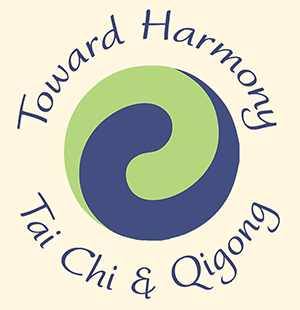A Powerful Relaxation Tool: Your Breath
/Last year I taught a 14-week course on breathing in tai chi. I was excited to teach this course, because becoming aware of my breath and learning to breathe better has been some of the most valuable training I have ever had. I found it profoundly helpful for lower back pain, stress relief, and anxiety. It is the single most effective relaxation technique I know.
I was pleased when many of my students told me that they, too, found this material very helpful in their tai chi practice and in their daily life.
After every class at least one person would remark on how much more relaxed they felt. Even before they said anything, this was apparent. Of course, people generally seem more relaxed at the end of a good tai chi class. But after these classes the students were very noticeably more relaxed than usual, and lingered longer chatting before heading home.
In the beginning, it was a challenge for many people in the course to pay attention to their breath while performing the movements of the form. By the end of the course, though, this was becoming more manageable, and several people had commented that they felt a greater sense of flow in their tai chi form.
Some students came to class and reported, week after week, how the benefits of the breathing practice were spilling over into their daily lives. One person said that he felt calmer and more able to respond to stress and interpersonal conflicts. He said he was more aware of his breath throughout the day, and able to use the techniques to calm his mind by deepening and softening his breath.
In the course I taught some of the foundational practices of Taoist Longevity Breathing. These practices are designed to deepen and soften the breath, while simultaneously allowing the motion of the breath to massage the internal organs.
Taoist Longevity Breathing is based on how we all breathe naturally as infants. Rather than adding techniques, it is really about releasing unhealthy breathing patterns that we have developed during our lives.
If you would like to get a taste of this type of breathing, here is a simple exercise you can try:
Start by simply observing your breath, without any intention to change it in any way. You may find that once you turn your attention to your breath, it is difficult not to control it. That’s okay, simply observe this process. Over time, you may be able to let go of your conscious control of it.
Feel the kinesthetic sensations of your breathing. You may notice the air moving in and out of your nose, throat and lungs. You may notice the pressure and movement that occurs in your belly or elsewhere in your abdomen.
NOTE: It would be a good idea to practice just these first two instructions for a while until you can do them easily, before moving onto the rest of this post. This could mean practicing for a few minutes, or for a few minutes a day for a week or two, or longer. Learning to simply feel your breath is the foundation for all other breathing practices in our tradition.
Notice if there is any part of the breath cycle in which you tend to hold, constrict, or force your breath, either on the way in or out, or at either of the transitions. When you notice any of these things, see if you can let go.
The nice thing about the exhale is that it can be a total letting go. There is no muscular effort required to exhale - the diaphragm, the primary muscle of respiration, contracts to create a vacuum to draw air into your lungs. When you exhale, the diaphragm relaxes and the air naturally rushes out. You can contract additional muscles to push the air out more forcefully, but this is not necessary.
See if you can relax everything in your entire body along with the diaphragm as you exhale. Eventually, your body’s intelligence will naturally take over and cause the diaphragm to contract and bring in more air.
One final note is to see if you can allow your breathing to become softer and softer. Many people have a tendency, when they practice breathing, to try to take in as much air as they possibly can, and in doing so, they use a lot of effort and make their breathing very forceful.
There are breathing techniques that use this approach. However, if you are practicing breathing simply for general health purposes, this is unnecessary. And if you are practicing breathing to relax, it can be counterproductive to use force.
The reason is that your breath is very connected to your nervous system and your emotions. By training yourself to breathe in a way that causes tension and strain, you are training yourself to hold tension at a very deep level.
One of the discussions that people found the most useful in my breathing class was about the 70% principle, which entails only training to 70% of your capacity. In the case of breathing, this means finding a depth and length of breath that feels easy and truly comfortable, with no sense of strain or tension anywhere in your body. By letting your breath become very soft and relaxed, your nervous system will begin to calm down.
At first, this may mean taking smaller breaths than you think you should. But over time as you relax more and more, your capacity will increase naturally - without building in patterns of strain or tension.
I hope you enjoy playing around with this exercise. Remember, this approach to breathing is about returning to a more relaxed, natural way of breathing. Feel free to let me know how it goes, or ask any questions you may have, in the comments section.



